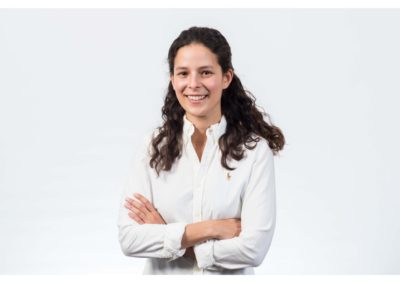T cells Protect the Brain after Nasal Virus Infection by Engaging Local Myeloid Cells that Cross-Present Antigen, E. Ashley Moseman, Alexa F Ciesinski, Dorian B McGavern, Viral Immunology & Intravital Imaging Section, National Institute of Neurological Disorders and Stroke, National Institutes of Health, Bethesda, United States
Pathogens that gain entry into the CNS elicit a uniquely tailored response from the immune compartment by modulating cytolytic and inflammatory functions that confer viral clearance with minimal brain damage. Neurotropic viruses such as vesicular stomatitis virus (VSV) infect neurons in the olfactory epithelial barrier and pass via sensory axons directly into brain. Within the olfactory bulb, VSV-infected neurons contact a variety of CNS neurons; however, the infection rarely invades the brain. While type I interferon responses are crucial for initial viral control, little is known about how the local adaptive immune response prevents fatal viral neuroinvasion. In this study, we sought insights into how cytotoxic lymphocytes prevent distal spread of infection from the olfactory bulb. Without T cells, virus containment is compromised and VSV traverses caudally to hindbrain regions. Utilizing intravital two-photon microscopy and other techniques, we characterized the mechanism by which T cell interactions within the olfactory bulb facilitate barrier protection. Interestingly, chimeric mice deficient in MHC class I on brain-resident cells, as well as microglia-depleted mice, showed reduced antiviral T cell calcium signaling upon target cell engagement, suggesting that microglia can cross-present viral antigen and indirectly facilitate viral clearance from adjacent virally infected neurons. To understand what protective signals T cells might provide the brain, we generated VSV expressing Cre recombinase. VSV-Cre infection of floxed IFNAR or floxed IFNγR mice revealed that while continued IFNAR signaling is critical, IFNγR expression was dispensible for VSV clearance. In addition, IFNγ and perforin deficient mice are similarly resistant, while TNFα deficient animals have increased VSV susceptibility. This study has revealed a novel mechanism of T cell-mediated viral control in neurons that involves engagement of uninfected resident myeloid cells that have acquired antigen and provides barrier protection against a virus attempting to enter the CNS via the nasal route.
Type-I interferon mediated degradation of microRNAs is sequence and length dependent, Charlotte Nejad1, 2, Michael Paul Gantier1, 2; 1Centre for Innate Immunity and Infectious Diseases, Hudson Institute of Medical Research, Clayton, Australia, 2Department of Molecular and Translational Science, Monash University, Clayton, Australia
Innate immune activation by pathogens promotes global transcriptional changes in infected cells, promptly affecting the levels of messenger RNAs (mRNAs) and non-coding RNAs such as microRNAs (miRNAs). As such, induced miRNAs cause rapid down regulation of mRNA targets, thereby controlling the duration and intensity of the immune response. Interestingly, there is evidence that upon type-I interferon (IFN) stimulation select miRNAs can be actively degraded, including the pro-inflammatory miR-221 and miR-222. However, the impact of these decreased miRNAs on IFN responses is currently not known. In this work, we initially observed by RT-qPCR that the levels of miR-221, and not that of the co-expressed miR-222, were decrease by >80% following Toll-like receptor (TLR) 3/4 stimulation, but not that of other TLRs. This specific decrease of miR-221 was type-I IFN dependent, and ablated in IFN-α/β receptor 1 deficient bone marrow-derived macrophages (BMDMs). Unexpectedly, miR-221 decrease was restricted to its longer isoforms, a phenomenon also observed for miR-222. RNA sequencing (RNAseq) carried out on human fibroblasts treated with type-I IFN confirmed these observations, identifying a group of other miRNAs for which the longer isoforms were similarly impacted. Significantly, we identified a core motif in these miRNAs directly regulating their stability, upon IFN-β stimulation, which can be attributed to the exoribonuclease Pnpt1. In addition, the RNAseq data revealed an overall decrease >70% of miR-222 molecules with IFN-β.
Collectively, these findings suggest that sequence and length-dependent miRNA degradation helps control the overall abundance of miR-221/222, and their pro-inflammatory function during type-I IFN responses.
The Sidney & Joan Pestka Graduate and Post-Graduate Awards for Excellence in Interferon and Cytokine Research Sponsored by PBL Assay Science
The Sidney & Joan Pestka Graduate and Post-Graduate Awards are targeted to graduate students and post-doctoral fellows who have begun to make an impact in interferon and cytokine research. The Awards were originally designed to fill the gap among the awards offered by the ICIS to more senior investigators—the Young Investigator Award, the Christina Fleishmann Award, Honorary Membership, and The Seymour and Vivian Milstein Award. Candidates must be actively working in interferon/cytokine research but need not be ICIS members.
Awards: Each award amounts to a $3500 cash award, $1500 travel grant, a $2500 PBL Assay Science product credit for each awardee, and a complementary one-year ICIS membership. Each awardee will receive a check in the amount of $5000 payable to the awardee at the annual ICIS Awards Ceremony. Should an awardee not attend the annual ICIS meeting, a travel grant will not be awarded and that awardee will receive a check in the amount of $3500 following the ICIS meeting. Each awardee will also receive a $2500 product credit from PBL Assay Science good for one year from the date of the award. This is an annual award, and a recipient may receive an award only once. An individual who receives the Graduate Award, however, remains eligible for the Post-Graduate Award. One award will be given to a graduate student and one award to a post-doctoral fellow where candidates of suitable caliber are identified. In years where a suitable candidate is not identified, an award will not be bestowed.
![]()




